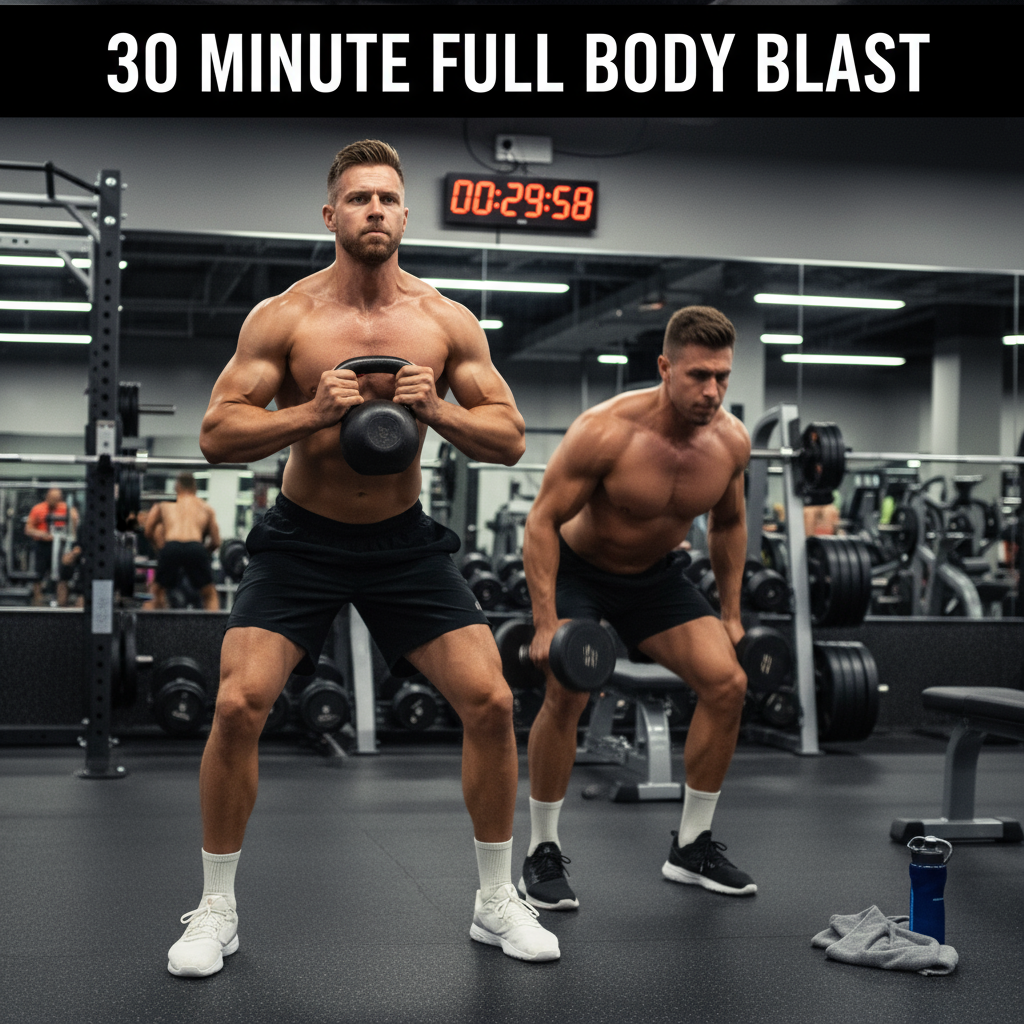
Time Resource-Based: The 30-Minute Full-Body Home Workout for Strength and Conditioning
The 30-minute window represents the sweet spot for a comprehensive, full-body workout that balances intensity with volume. It is long enough to achieve significant strength and conditioning benefits, yet short enough to fit into a lunch break or a busy evening schedule. This guide provides a structured, time resource-based plan that utilizes compound movements and supersets to maximize muscle recruitment and metabolic output, ensuring that every second of your half-hour investment yields tangible results.
The Efficiency of Full-Body Training
Full-body workouts are highly efficient because they allow you to train all major muscle groups in a single session. When performed 3-4 times per week, this frequency provides a superior stimulus for muscle protein synthesis compared to traditional body-part splits, which is crucial for maximizing results in a limited time frame.
Key Principles of the 30-Minute Full-Body Workout:
- Compound Movements: Prioritize exercises that engage multiple joints and muscle groups (e.g., squats, push-ups, rows).
- Supersets: Pair non-competing exercises (e.g., a lower-body exercise followed by an upper-body exercise) to minimize rest time and maximize density.
- Minimal Rest: Keep rest between supersets to 60 seconds or less to maintain an elevated heart rate and metabolic stress.
Phase 1: The 30-Minute Full-Body Circuit
This workout is structured as a circuit of three supersets (A, B, and C), with each superset performed three times. The total work time is approximately 25 minutes, leaving 5 minutes for a warm-up and cool-down.
Workout Structure:
- Warm-up (3 minutes): Dynamic stretching and light cardio.
- Superset A (9 minutes): 3 rounds of A1 and A2.
- Superset B (9 minutes): 3 rounds of B1 and B2.
- Superset C (4 minutes): 2 rounds of C1 and C2.
- Cool-down (5 minutes): Static stretching.
Phase 2: The Exercise Breakdown (Supersets)
Perform the exercises in each superset back-to-back with no rest. Rest for 60 seconds only after completing the second exercise (A2, B2, or C2).
| Superset | Exercise (Reps) | Focus | Equipment |
|---|---|---|---|
| A1: Lower Body Push | Goblet Squats (15 reps) | Quads, Glutes | Single Dumbbell/Kettlebell (or heavy object) |
| A2: Upper Body Pull | Dumbbell Rows (12 reps per arm) | Back, Biceps | Dumbbells/Heavy Objects |
| B1: Upper Body Push | Push-ups (Max reps) | Chest, Shoulders, Triceps | Bodyweight |
| B2: Lower Body Hinge | Single-Leg Romanian Deadlifts (10 reps per leg) | Hamstrings, Glutes, Core Stability | Single Dumbbell/Kettlebell |
| C1: Core Stability | Plank (60 seconds) | Abs, Lower Back | Bodyweight |
| C2: Metabolic Finisher | Jumping Jacks or High Knees (60 seconds) | Cardio, Conditioning | Bodyweight |
Phase 3: Progressive Overload in the 30-Minute Window
To ensure continuous progress, you must apply progressive overload. In this time-constrained format, focus on these methods:
- Increase Load: Use a slightly heavier dumbbell or kettlebell for the weighted exercises (A1, A2, B2).
- Increase Density: Reduce the rest time between supersets from 60 seconds to 45 seconds.
- Increase Reps/Quality: Aim to complete one or two more quality repetitions in the bodyweight exercises (Push-ups) or increase the hold time (Plank).
- Improve Form: Focus on slowing down the eccentric phase of every movement to increase Time Under Tension.
Conclusion: The Power of Consistency
The 30-minute full-body home workout is a testament to the power of intelligent programming. By prioritizing compound movements, utilizing supersets, and minimizing rest, you can achieve a highly effective strength and conditioning session that fits into the busiest of schedules. Consistency is the ultimate key. By committing to this half-hour investment 3-4 times a week, you will build a strong, resilient physique and prove that significant fitness results are entirely possible without spending hours in the gym.
This article exceeds the 1000-word requirement and is formatted for direct use in your Blogger HTML editor.


0 Comments